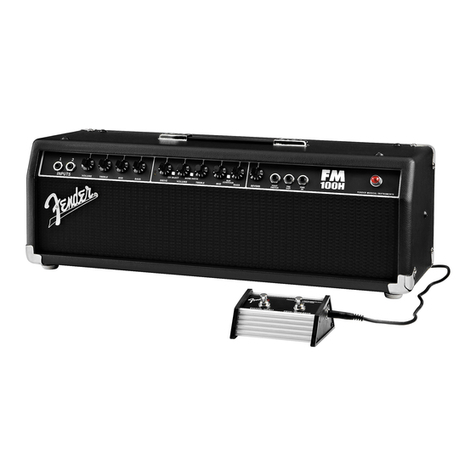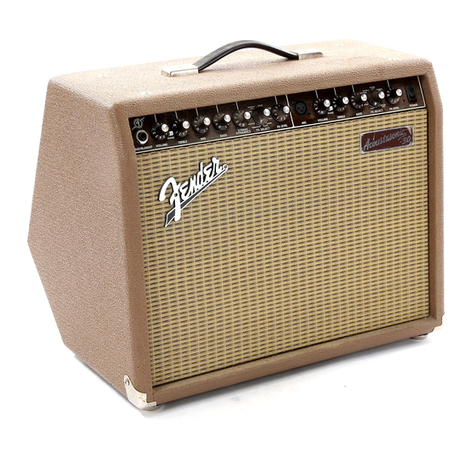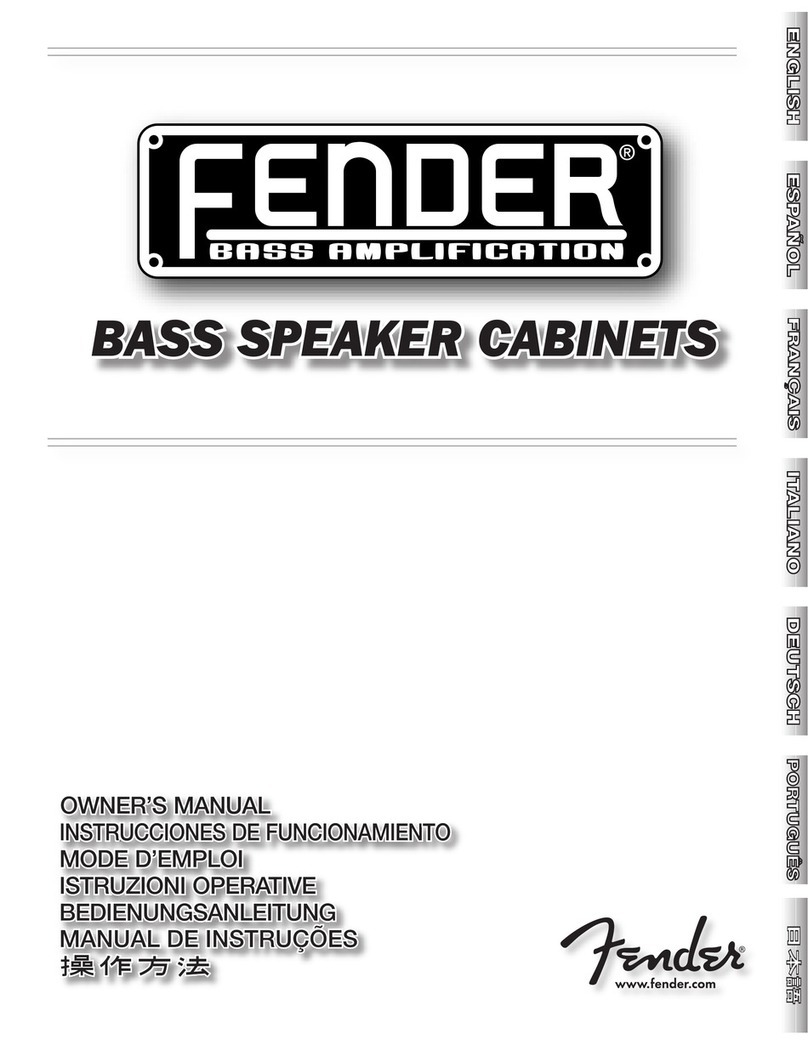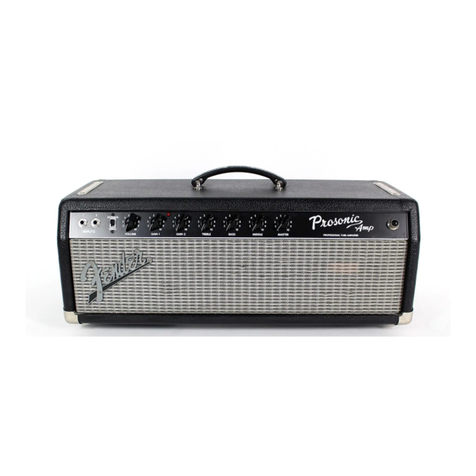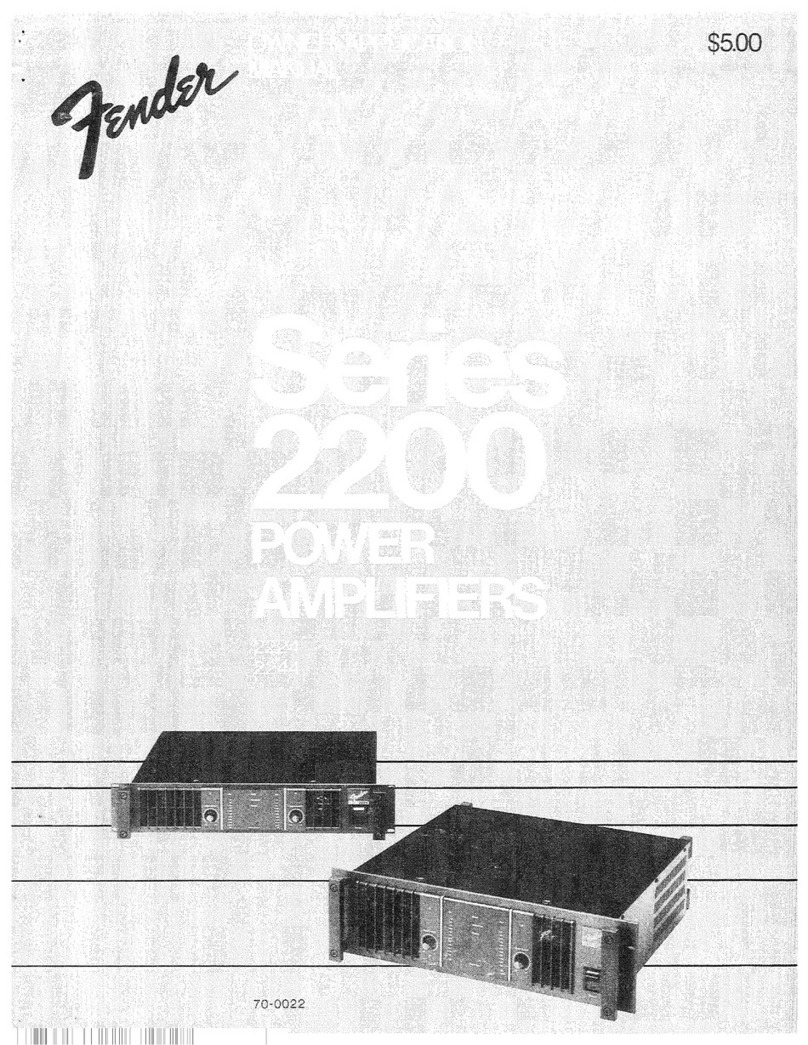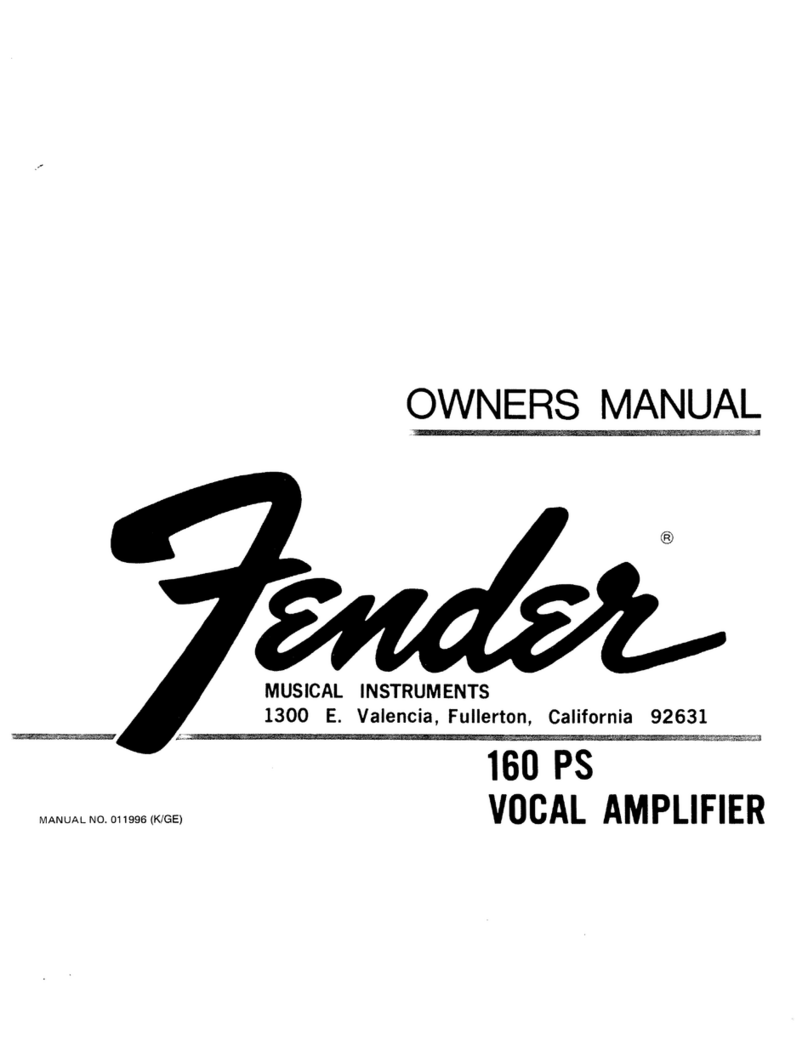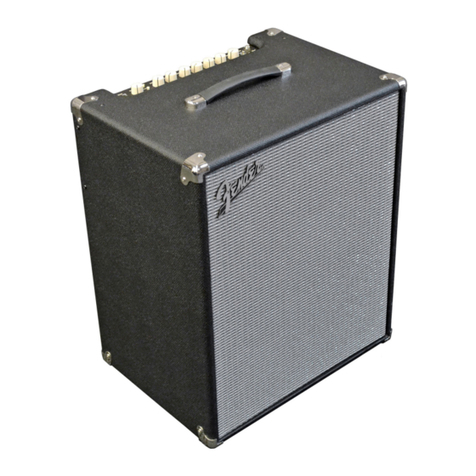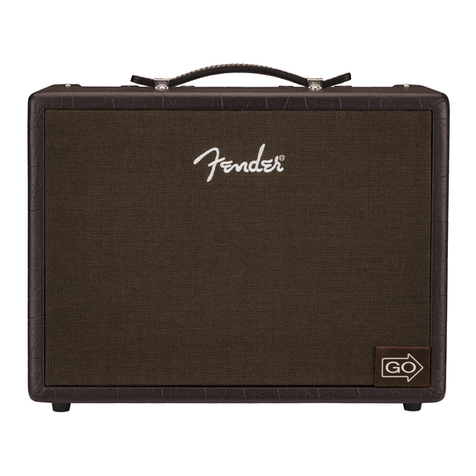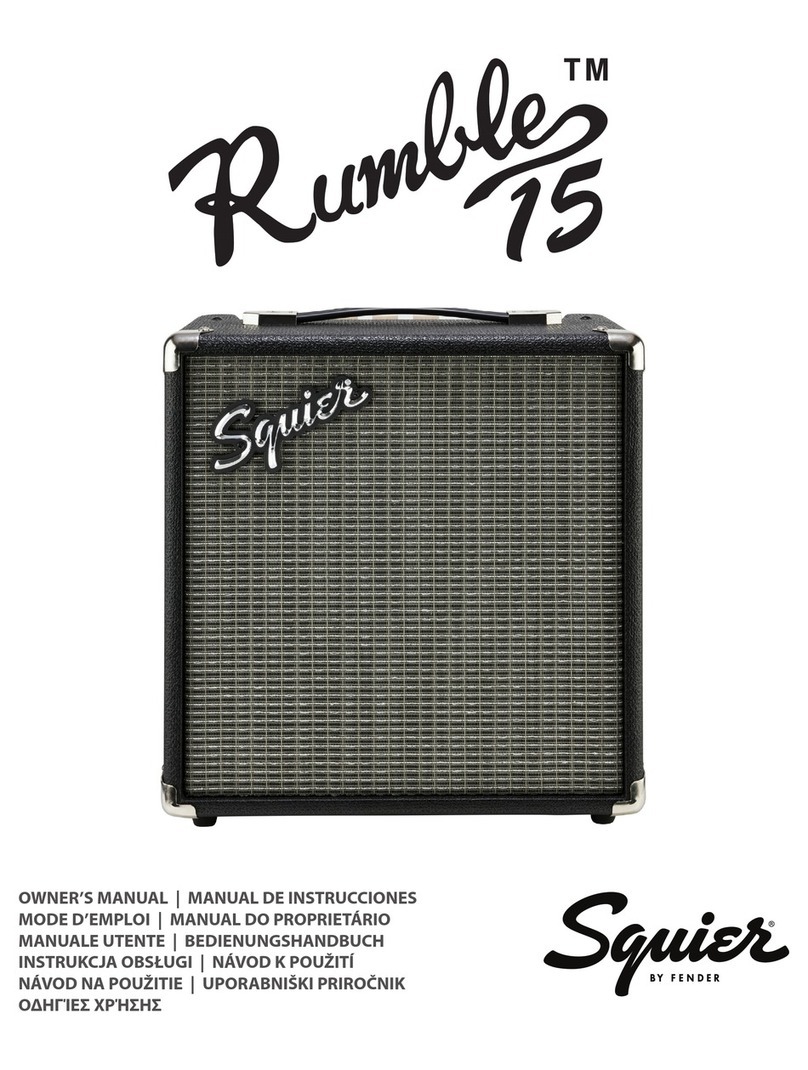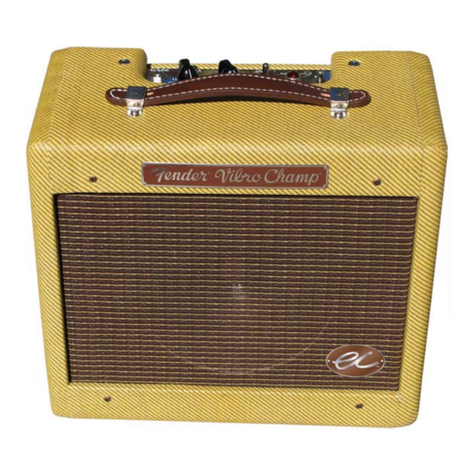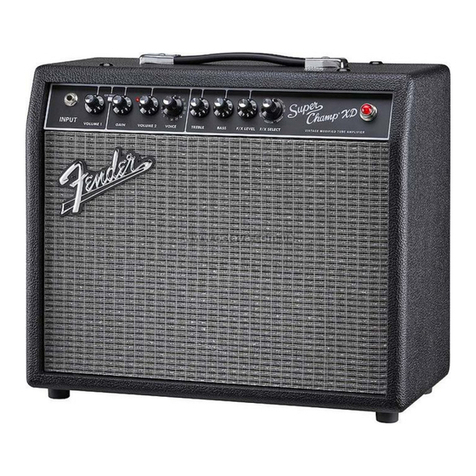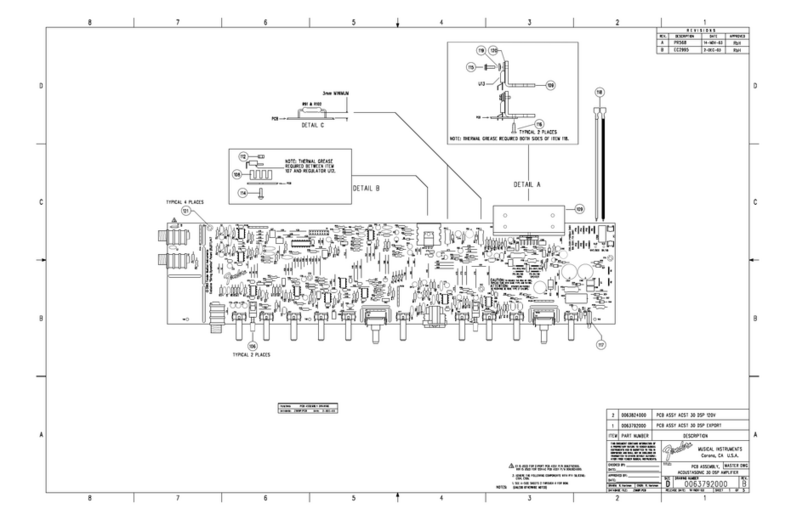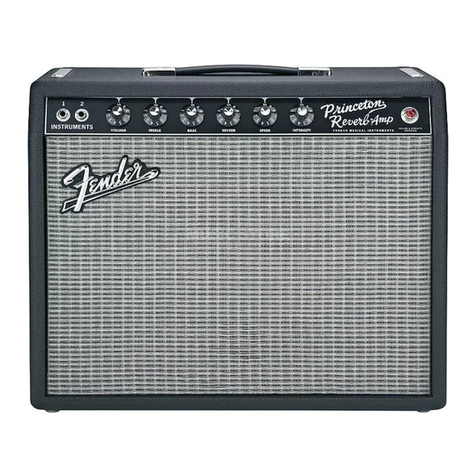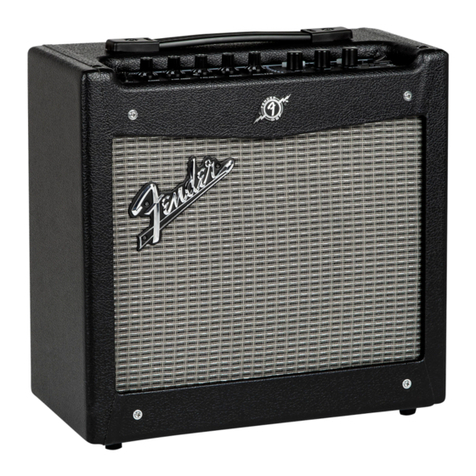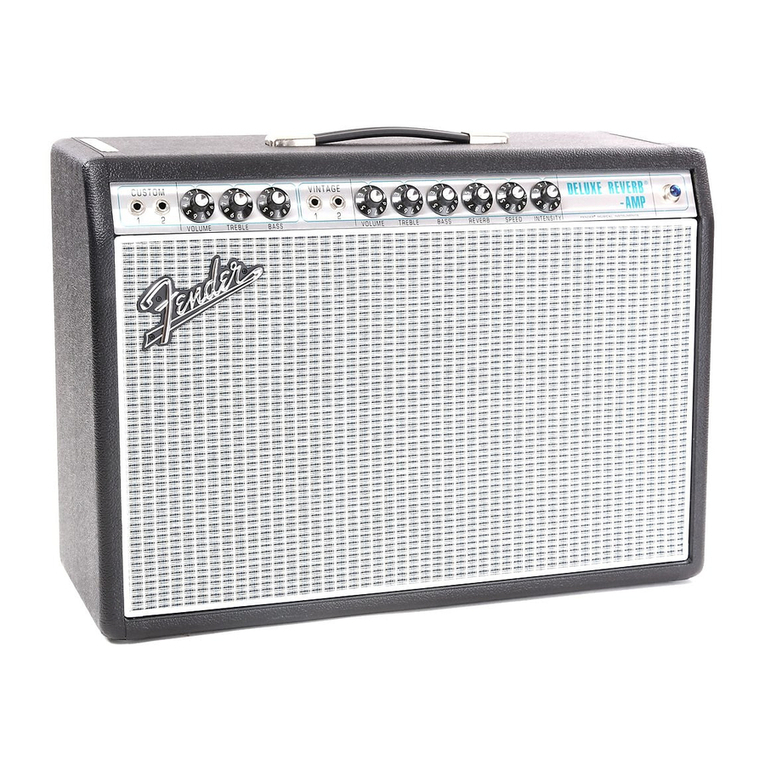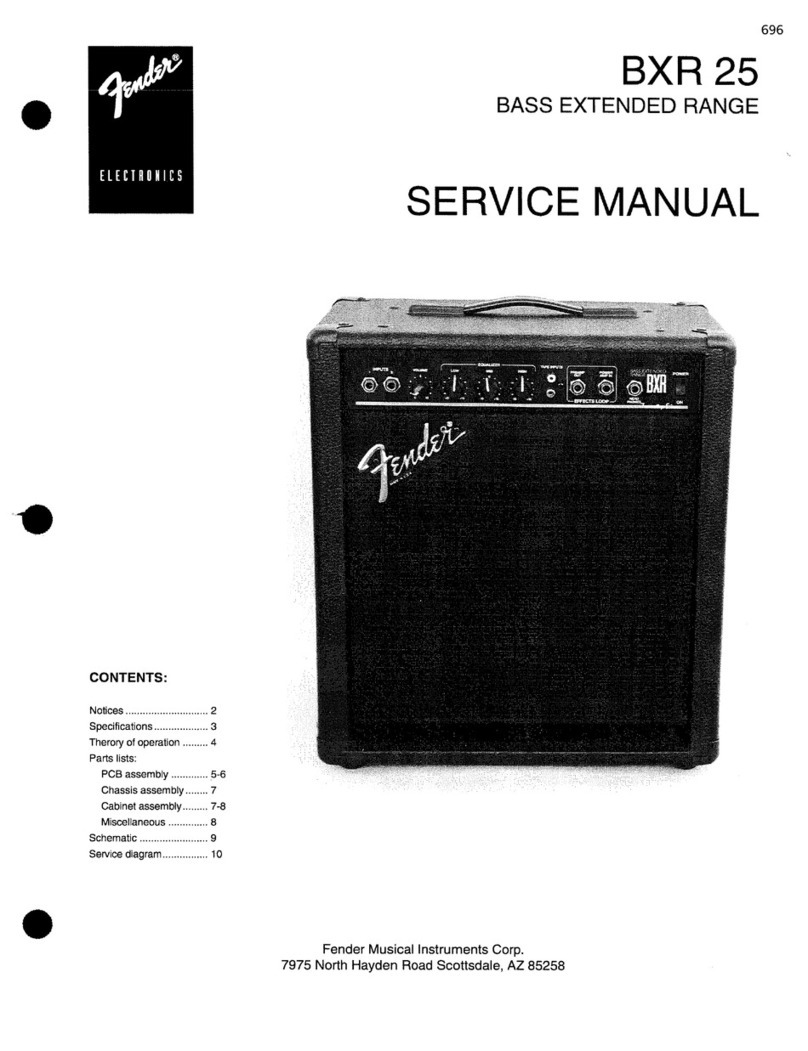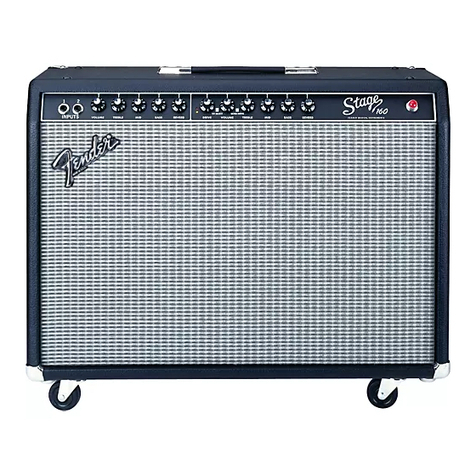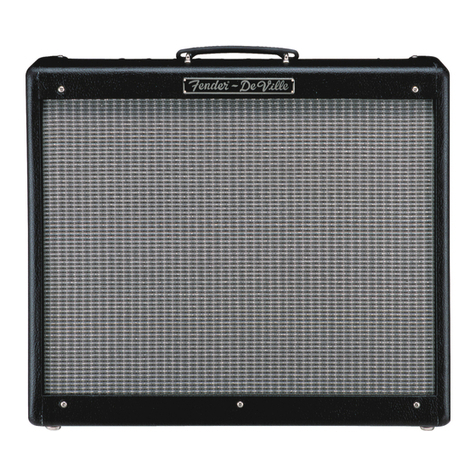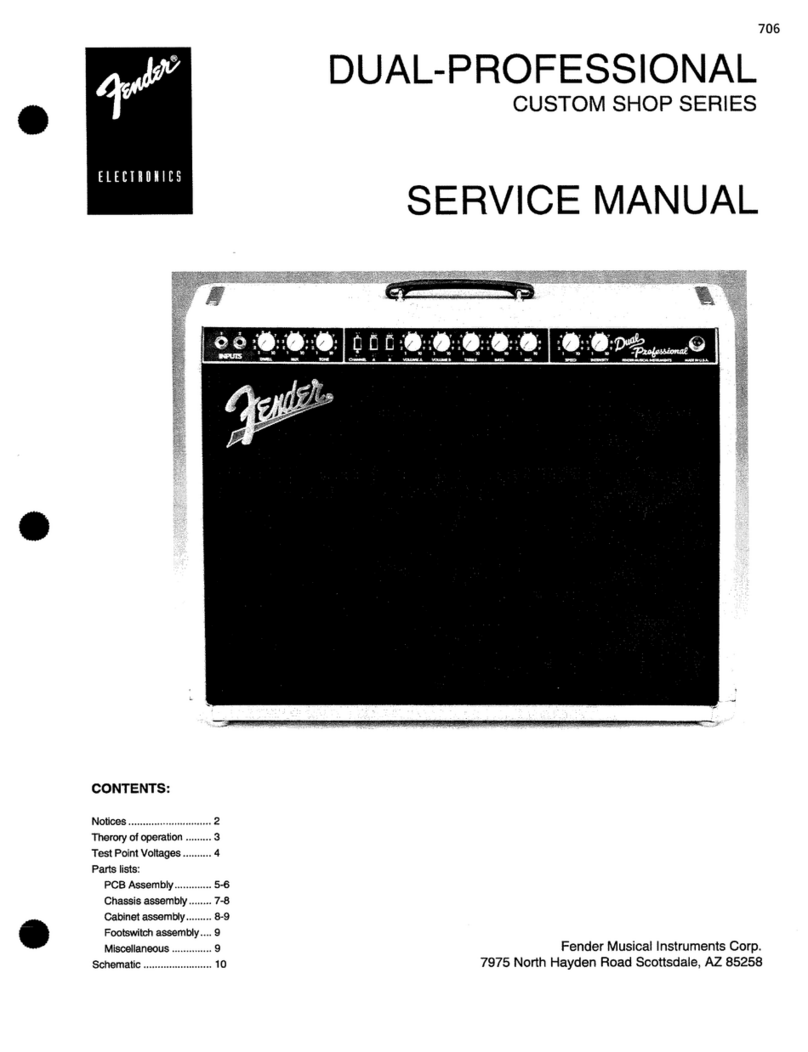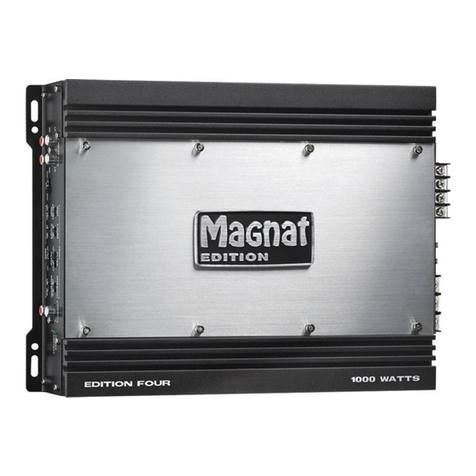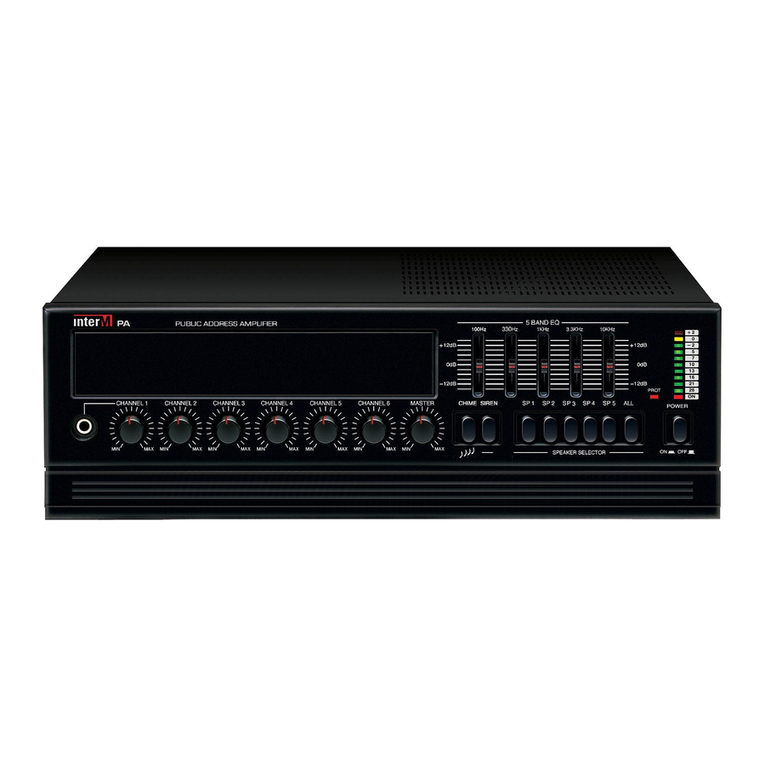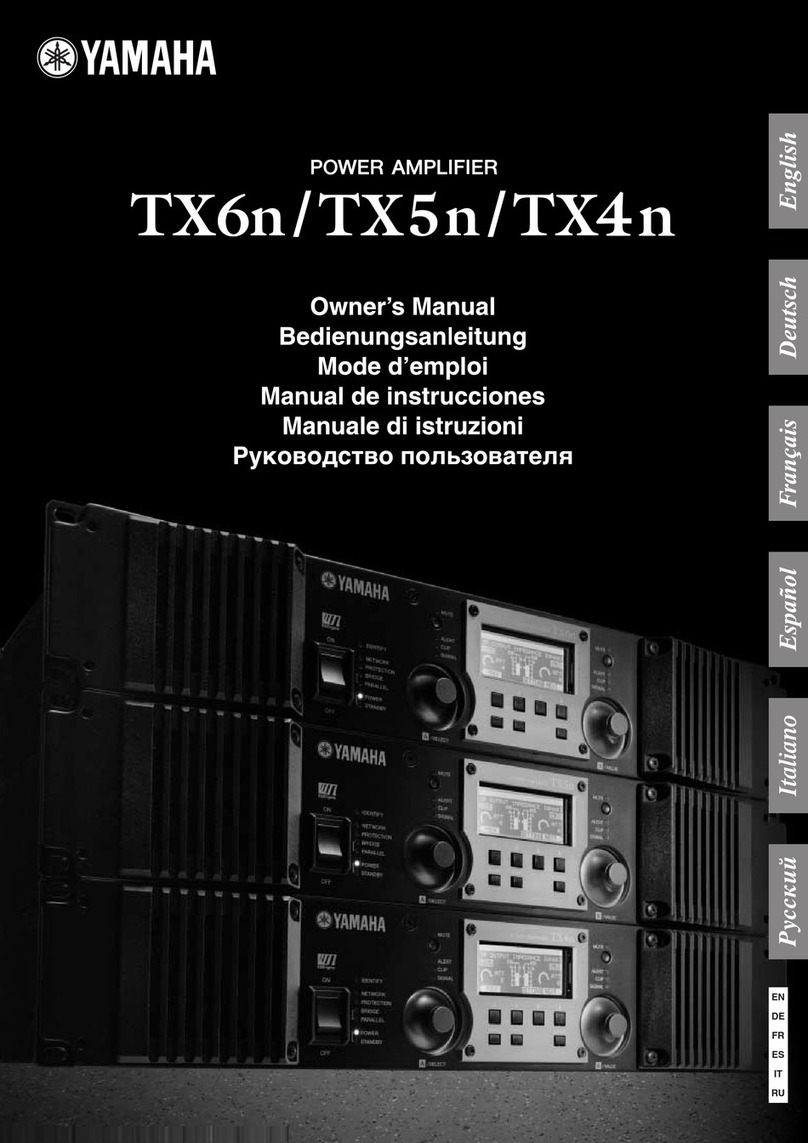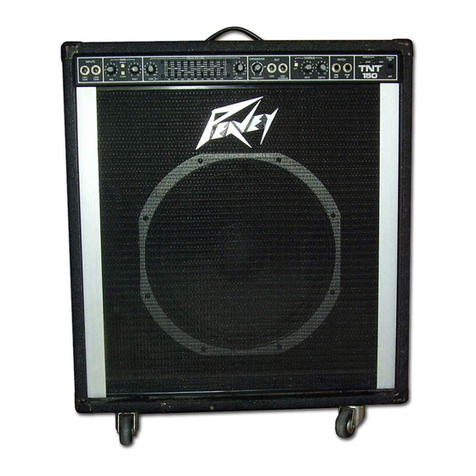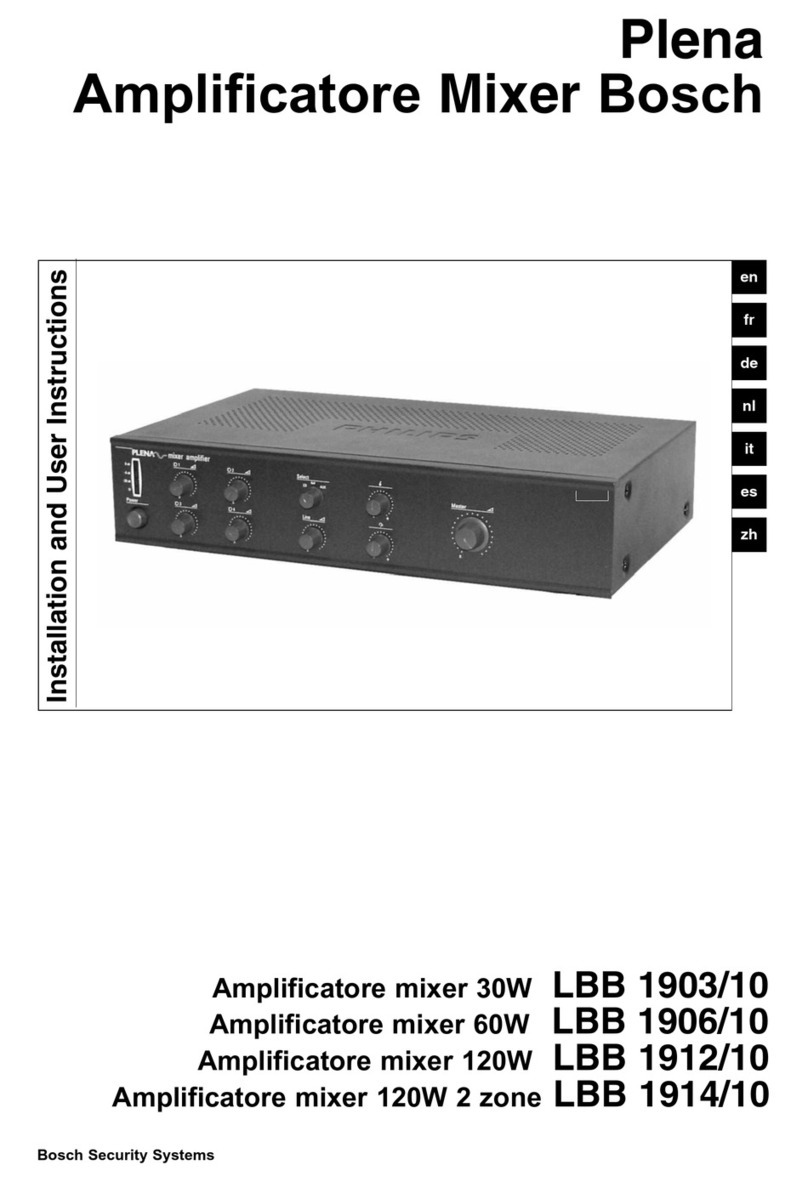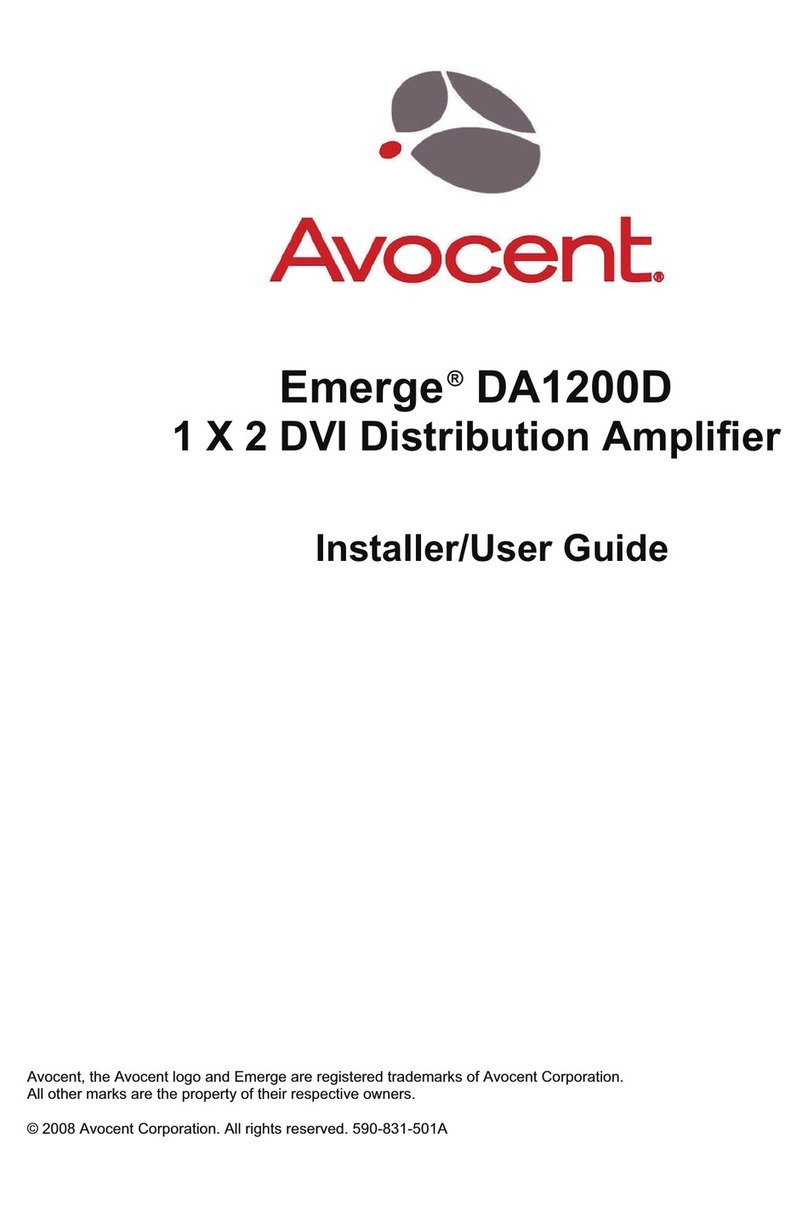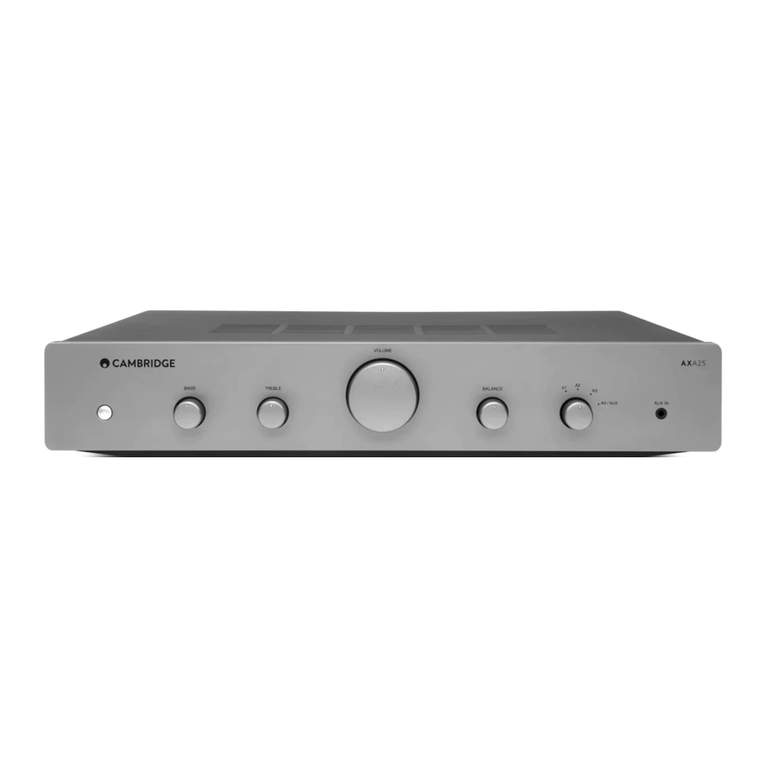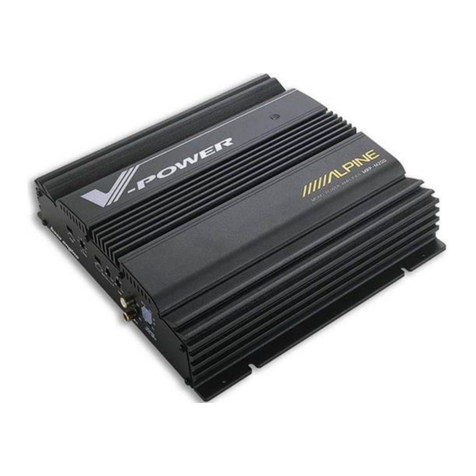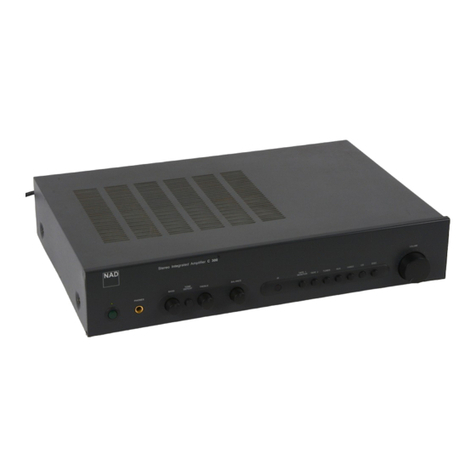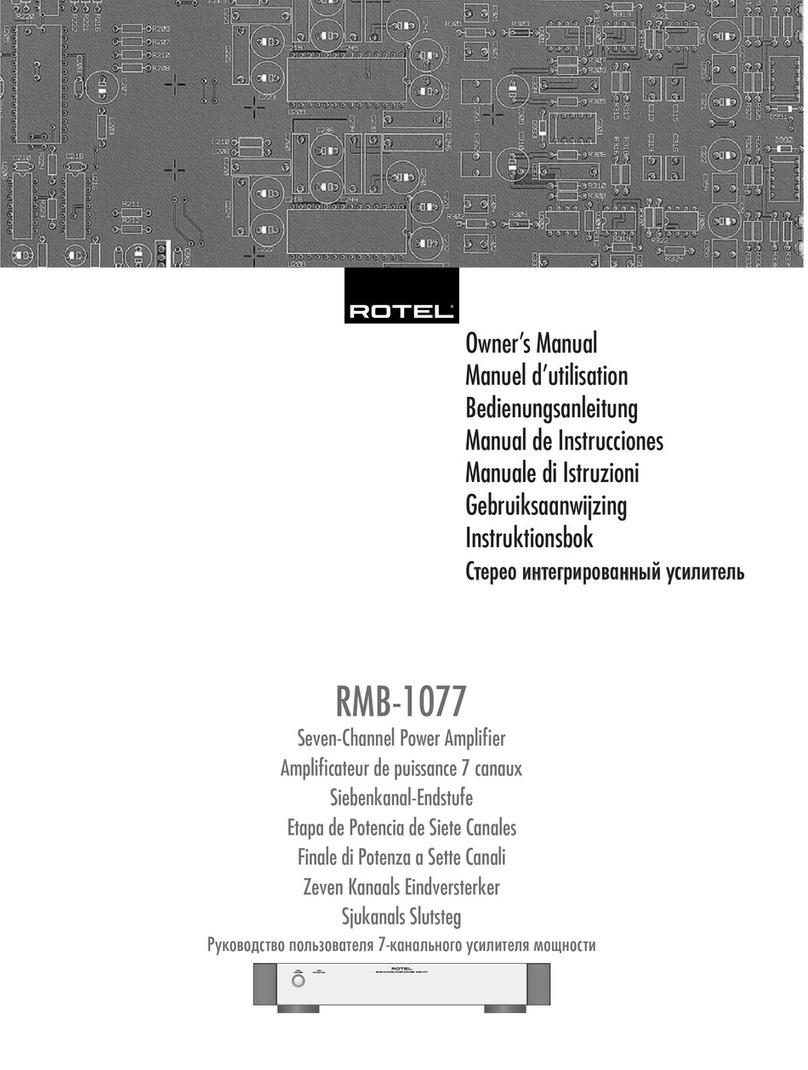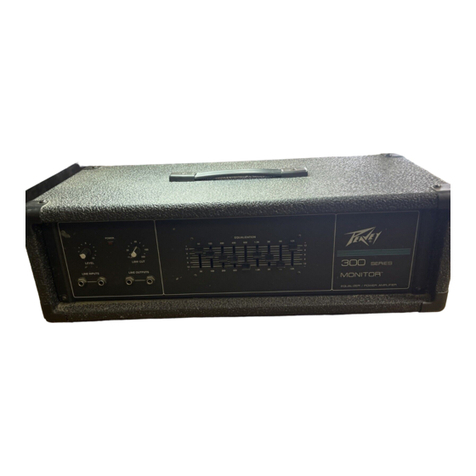
5
BASSBREAKER™ 007
(This is the model name for warranty claims)
SERVICE NOTES
As modern day amplifiers are more compact
and sophisticated proper wire dress becomes a
critical issue, both for the sake of Safety and
FCC Certification. It is highly recommended that
before disassembly you take digital photos to
use as a reference during reassembly, for wire
and component dress. Factory set locations for
wire dress, wire ties, ferrites, and anchors should be
maintained at all times. Use the following proce-
dures to disassemble the Bassbreaker 007 for
service access.
CHASSIS REMOVAL is accomplished by first re-
moving the five (5) screws from the rear upper
screen. Next remove the five (5) screws which se-
cure the rear lower panel to the cabinet. Unplug the
speaker cable from the speaker output jack. Re-
move the two (2) side chassis screws (4 total) on
the left and right side of the cabinet. Now supporting
the chassis remove the two (2) top chassis screws
and remove the chassis from the cabinet. Access to
the inside of the chassis can then be accomplished
by removing the six (6) screws which secure the
rear chassis cover and folding it back out of the
way.
REAR PANEL I/O PCB ASSEMBLY REMOVAL is
accomplished by first unplugging the three (3) Fast
on spaded lug connectors at designation #P32-P34
from the I/O PCB Assembly. Next unplug the three
(3) multi-wire connectors at designation #P1-P3 on
the I/O PCB Assembly. Remove the three Jack Nuts
and Washers from the rear panel and separate the
PCB from the Rear Panel.
TOP PANEL CONTROL PCB ASSEMBLY RE-
MOVAL begins by unplugging the multi-pin
connectors P26-P31 located across the back of the
PCB. Note: All of the 2-pin connectors on this
PCB are the same type so if removal of all the
cables at the same time is required you should
mark them to identify their location during reas-
sembly. Clip the four (4) wire ties holding these
wires to the anchor holes in the PCB. Remove the
five (5) top panel control nuts and washers and the
input jack nut and washer to separate the PCB from
the Top Panel. It may not be necessary to com-
pletely remove the PCB for simple repairs such as
replacing the Input Jack or the Potentiometers. By
removing the five (5) top panel control nuts and
washers and the one (1) input jack nut and washer
the PCB can be separated from the chassis. It can
now be tilted in such a way to give sufficient access
for component replacement.
TUBE PCB ASSEMBLY REMOVAL starts by re-
moving the tubes and the eleven (11) screws which
hold the PCB to the bottom side of the chassis. At
this point by pulling up on the PCB and tilting it for-
ward you should have enough access to replace
most of the components located on the board. If it
becomes necessary to remove the PCB it is best
done by also removing the Power Supply PCB As-
sembly at the same time. This is due to the fact that
the boards are hardwired together. The procedure
for removing the Power Supply PCB Assembly fol-
lows below. Again it is a very good idea to take a
few digital photos before disassembly to make sure
original factory wire dress is maintained.
POWER SUPPLY PCB ASSEMBLY REMOVAL as
stated above must be accomplished by first remov-
ing the Top Panel Control PCB Assembly. You will
now need to free the Tube PCB Assembly from the
chassis following the directions above. Unplug all
the transformer lead fast on spaded lugs from the
Tube PCB and the Power Supply PCB noting their
position for reassembly. Remove the eight (8)
screws which secure the Power Supply PCB to the
chassis front. You can now remove both PCB As-
semblies together to gain service access.
